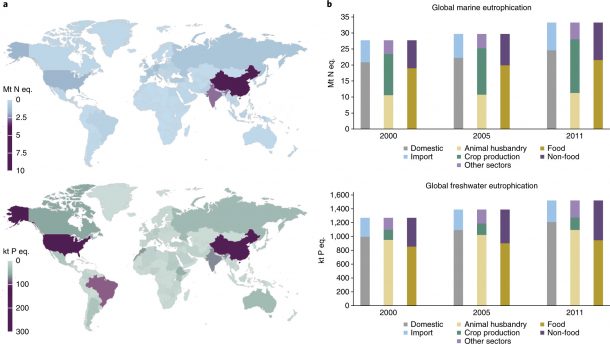Trade and the role of non-food commodities for global eutrophication
Hamilton H A, Ivanova D, Stadler K, Merciai S, Schmidt J, van Zelm R, Moran D, Wood R (2018)
Publication info
Nature Sustainability 1:314–321
Abstract
The oversupply of nutrients (phosphorous and nitrogen) in fresh and marine water bodies presents a serious ecosystem threat due to impacts on water quality through eutrophication. With agriculture characterized as a primary driver of eutrophication, the role of food consumption and trade has been the focus of recent phosphorus and nitrogen impact studies. However, the environmental impacts associated with non-food commodities are significant and yet to be characterized. Here, we link a spatially explicit treatment of phosphorous and nitrogen eutrophication potentials to a multi-regional input–output approach to characterize the importance of overall consumption for marine and freshwater eutrophication across 44 countries and 5 rest-of-world regions over the period 2000–2011. We find that clothing, goods for shelter, services and other manufactured products account for 35% of global marine eutrophication and 38% of the global freshwater eutrophication footprints in 2011, up from 31 and 33%, respectively, in 2000. Relative to food consumption, non-food consumption is also significantly more income elastic and shaped by trade. As economies develop, this points to the need for trade agreements and policies to consider the displacement of ecosystem impacts.

Global ME and FE footprints for 2011 by country (a) and for the years 2000, 2005 and 2011 (b).
Footprints are broken down based on whether they occurred domestically or from the consumption of imported products, by producing sector (crop production, animal husbandry and other sectors), and by consumed product type (food and non-food). Global footprint totals are equal to global total direct impacts. See Supplementary Information for numerical values.
complimentary link to full paper